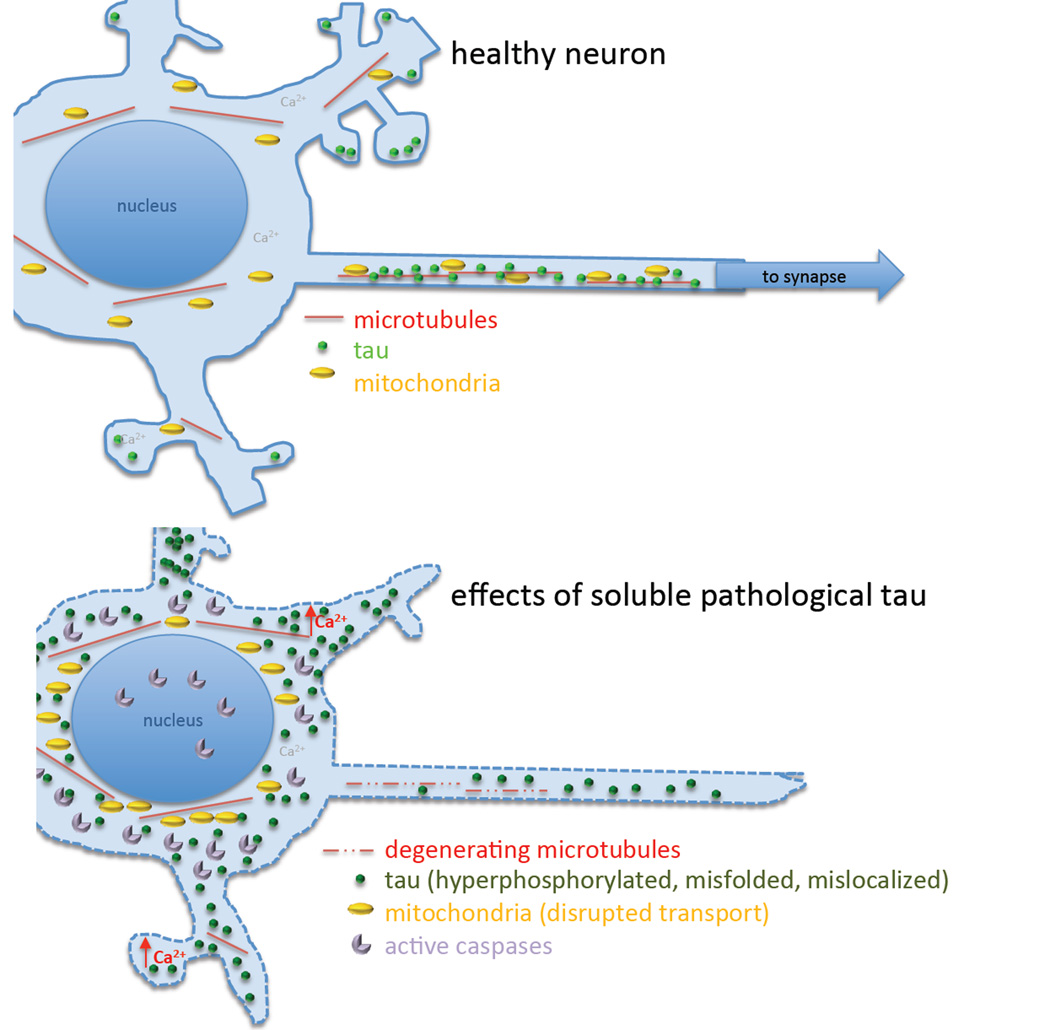Figure 1.
Mechanisms of tau toxicity. Strong evidence supports a role of soluble pathological forms of tau in several mechanistic pathways leading to synapse and neuronal death. Tau is normally largely bound to axonal microtubules and plas a role in dendritic spine plasticity. During Alzheimer’s disease and other tauopathies, tau becomes hyperphosphorylated and misfolded. It detaches from microtubules and accumulates in the somatodendritic compartment. Accumulation of soluble tau in the soma is associated with caspase activation and disruptions of membrane integrity, which resolve after the soluble tau coalesces into a neurofibrillary tangle. Removal of tau from microtubules causes them to degenerate, and pathological tau may also directly interfere with microtubule based transport mechanisms. Disturbances in microtubule transport affect mitochondrial trafficking to distal parts of the neuron resulting in perinuclear clumping. Synapses become dysfunctional and dendritic spines are lost, and calcium levels increase in dendrites with accumulations of soluble tau. Synapse loss and the inability to energetically maintain axons are thought to contribute to the dying back of processes and cell death.

